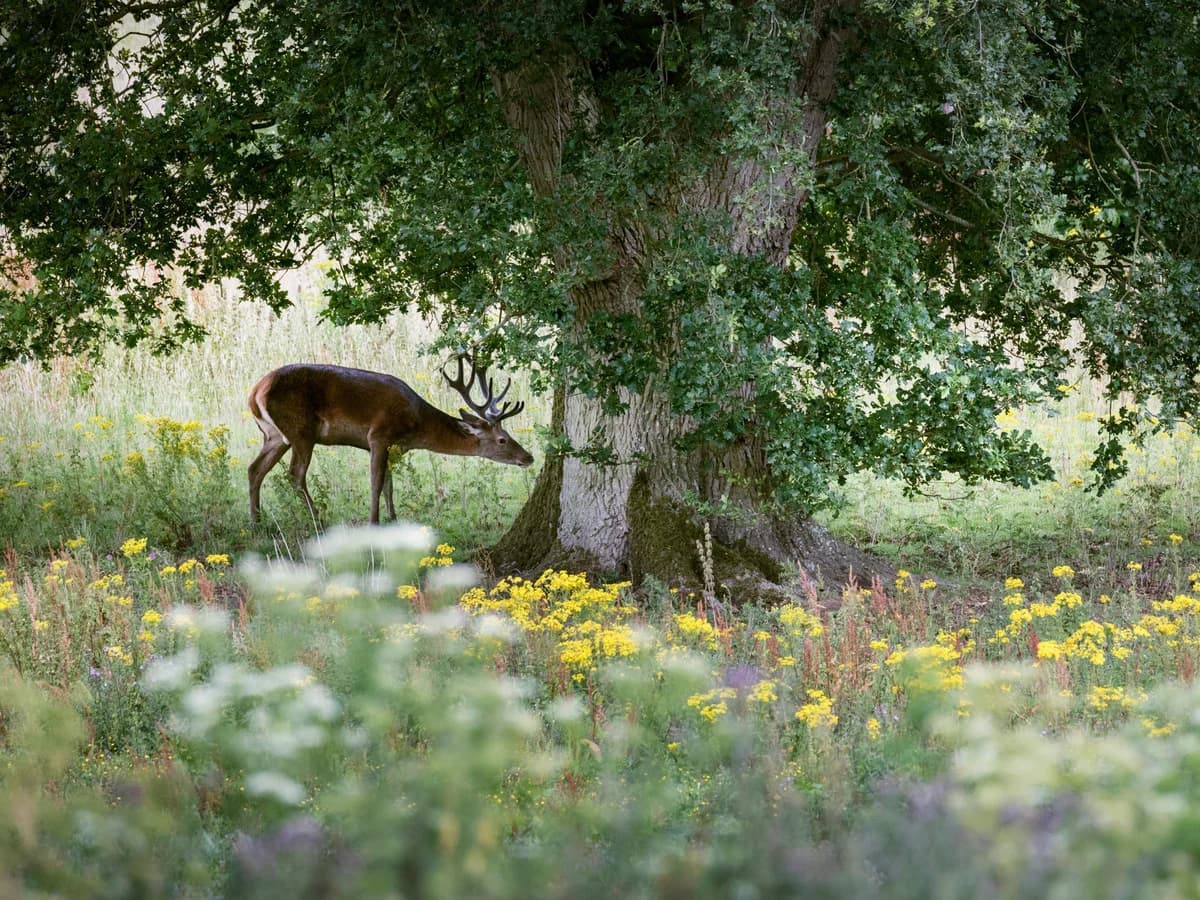Loading News Article...
We're loading the full news article for you. This includes the article content, images, author information, and related articles.
We're loading the full news article for you. This includes the article content, images, author information, and related articles.
A British grassroots initiative, WildEast, is scaling its nature restoration efforts across the UK, offering a model that resonates with Kenya's ongoing commitment to rewilding and community-led conservation.

A pioneering grassroots movement in the United Kingdom, WildEast, which began with a mission to rewild a fifth of East Anglia, has now expanded its 'map of dreams' nationally. This initiative encourages individuals, communities, and businesses across Britain to pledge land for nature restoration, a concept that mirrors and inspires similar conservation efforts in Kenya.
WildEast was founded five years ago by three farmers concerned about the environment. They committed at least 20% of their land to nature recovery. Since then, thousands have joined, pledging to rewild diverse spaces from gardens to school grounds. The newly launched national 'Wild Kingdom' map serves as a digital platform for participants to record their pledges, share progress, and connect with others dedicated to ecological restoration.
Kenya has a long-standing commitment to environmental protection, enshrined in its Constitution of 2010, which guarantees every citizen the right to a clean and healthy environment. The Environmental Management and Coordination Act (EMCA) of 1999 further provides the legal framework for environmental management, overseen by the National Environment Management Authority (NEMA).
The country's conservation efforts are critical, given that approximately 12% of its total land mass has some form of protection, with 8% designated as national parks or reserves. However, a significant portion of Kenya's wildlife, over 65% of large mammal populations, resides outside these protected areas on private and communal lands, highlighting the importance of community involvement in conservation.
The Kenyan government has developed comprehensive policies and strategies to address environmental and climate change issues. The National Environment Policy of 2013 provides a framework for integrated planning and sustainable management of natural resources. Additionally, the Climate Change Act of 2016 offers a framework for promoting climate-resilient, low-carbon economic development, with a National Climate Change Action Plan updated every five years.
These policies aim to integrate environmental considerations into all government sectors, fostering a green economy and enhancing social inclusion. The Ministry of Environment, Climate Change and Forestry is mandated to conserve, protect, and sustainably manage the environment and natural resources to support biodiversity and socio-economic transformation.
In the UK, Hugh Crossley, a co-founder of WildEast and Lord Somerleyton, emphasised the collective responsibility towards nature, stating, 'Nature, like us, thrives on the very thing we have deprived it of – wild space and connectivity.' He has personally dedicated a quarter of his 2,023-hectare estate to biodiversity, alongside producing carbon-negative food.
Similarly, in Kenya, community-based conservation has proven vital. Organisations like the Maasai Wilderness Conservation Trust (MWCT) fund programs that protect wilderness and wildlife by promoting sustainable economic benefits for local communities, encouraging their active participation as stewards of the ecosystem. The success of rewilding projects, such as the reintroduction of the critically endangered Mountain Bongo by the Mount Kenya Wildlife Conservancy (MKWC), is anchored in active community participation.
Despite conservation successes, Kenya faces significant challenges. The rapidly growing human population, which surged from approximately 22 million in 1989 to an estimated 55 million currently, leads to increased encroachment on animal habitats and migration routes, escalating human-wildlife conflict. A study between 1977 and 2016 indicated a 68% decline in Kenya's wildlife populations, with some species declining by as much as 88%, largely due to habitat loss and competition with livestock.
While the WildEast model in the UK focuses on pledges and digital mapping, the direct applicability and scalability of such a purely voluntary, digitally-driven approach in diverse Kenyan contexts, particularly in remote areas with varying digital literacy and land tenure systems, remain to be fully explored. The long-term financial sustainability of such broad-based rewilding efforts, both in the UK and Kenya, also presents an ongoing question.
The Wild Kingdom's national 'map of dreams' launched on Monday, October 20, 2025, aiming to gather pledges and connect communities across Britain. In Kenya, the government aims to protect 30% of the country's terrestrial and freshwater ecosystems by 2030, with the expansion of wildlife conservancies being a key mechanism to achieve this goal.
Observers will be keen to see how the Wild Kingdom initiative translates its digital pledges into tangible ecological restoration across diverse landscapes in the UK. In Kenya, the focus will remain on the continued expansion and effectiveness of community conservancies and the implementation of policies that mitigate human-wildlife conflict while fostering sustainable development. The integration of traditional conservation methods with modern rewilding techniques, as seen in projects like the Mount Kenya Landscape Restoration Project, will be crucial.
Kenya's conservation journey includes notable initiatives such as the Sheldrick Wildlife Trust's work in rescuing and rewilding orphaned elephants and rhinos, and the Mount Kenya Wildlife Conservancy's successful reintroduction of the critically endangered Mountain Bongo.
Keep the conversation in one place—threads here stay linked to the story and in the forums.
Other hot threads
E-sports and Gaming Community in Kenya
Active 6 months ago
Popular Recreational Activities Across Counties
Active 6 months ago
The Role of Technology in Modern Agriculture (AgriTech)
Active 6 months ago
Investing in Youth Sports Development Programs
Active 6 months ago